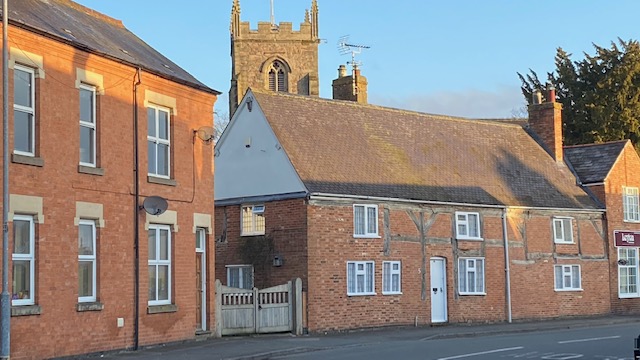 Countesthorpe is a large village of some 7000 inhabitants set in a parish of over 1200 acres six miles to the south of Leicester. Unlike the vast majority of Leicestershire villages it gets no mention in the Domesday Book but, in spite of this omission, it would have existed albeit as a dependent settlement of Blaby, of which village it remained a chapelry in ecclesiastical terms until 1878. In spite of this dependency a separate parish register was kept from 1562.
Countesthorpe is a large village of some 7000 inhabitants set in a parish of over 1200 acres six miles to the south of Leicester. Unlike the vast majority of Leicestershire villages it gets no mention in the Domesday Book but, in spite of this omission, it would have existed albeit as a dependent settlement of Blaby, of which village it remained a chapelry in ecclesiastical terms until 1878. In spite of this dependency a separate parish register was kept from 1562.
The first records of the village, dating from the late 11th and early 12th centuries, refer to it simply as `torp' or `thorp(e)', i.e. a Danish term for a secondary settlement or outlying farmstead and in 1276 it was referred to as `thorpcontasse'. The `countes-' element is said to derive from the Countess Judith, niece of William the Conqueror, who was a major landowner in Leicestershire (and elsewhere) at Domesday. The first record of the prefix `countes-' dates from 1242 when it was spelt `cuntassethorp', and we first find the modern spelling in a record of 1395. Variations in spelling continued into the 17th century.
The parish church of St Andrew dates from the early 13th century when the lord of the manor was William de Lodbrok. It was rebuilt in 1841 and again largely rebuilt in 1907, although the 14th-century tower still remains. The village also has a Baptist chapel (1810), a Methodist chapel (1845 and a cemetery (1893).
Adjacent to the church is the Church Room (Cornerstone) built as a school for 60 children in 1841 on the site of a house that was purchased by the Reverend Edward Stokes, rector of Blaby, for ten shillings in 1753. When he gave it to the people of the village it consisted of a two-storey building, the upper floor of which was to be used both as a school and parish offices. The ground floor consisted of a parlour, stables, two coal houses and two 'necessary houses'. Opposite is the former Infant School founded in 1873 and extended in 1913; it has recently been converted into several domestic apartments. The Foston Road School was opened in 1900 and subsequently enlarged. Today (2008) it houses the Blackberry Bush children's nursery. The modern Greenfield Primary School is situated centrally on Gwendoline Drive, while the Leysland High School and the Countesthorpe Community College occupy a large campus at the west end of the village on Winchester Road.
The Cottage Homes, next to the College campus, were opened in 1884 by the forward-looking Leicester Board of Guardians who wanted orphan children to be brought up in a home environment rather than in institutions such as the workhouse. Perhaps the most famous of these orphans was William Buckingham who was awarded the V.C. in the 1914-18 war in which he was subsequently killed. A road in the village is named in his memory. Robert Gee V.C., M.C., M.P., also lived at the Cottage Homes for three years before making successful careers in the army and politics before emigrating to Australia.
Countesthorpe has two visible half-timbered houses; that in The Square being a particularly fine example dating back to the late 15th century, while the one in Main Street was probably built in the late 16th or early 17th century. Perhaps the oldest house in the village is to be found in Orchard Lane, cruck-framed it was formerly one of three blacksmiths' shops to be found in the village in the mid-19th century.
The cottage industry of stocking knitting started in the first half of the 18th century in the village and developed with the building of several frame-knitting shops. None of these are still in use as knitwear factories, but knitwear and other light industry still give some local employment. The village is surrounded by good agricultural land. The open fields of the village were enclosed in 1766 (see separate section on 'Enclosure'), but many of the old furlong names survive as field names today, examples are; Scalborough, Galloway and Leysland. Hospital Lane and Foston Road were part of the Barlestone to Foston turnpike which was used to bring coal to this area. Prior to the mid-1960s growth of the village was slow and in 1961 the population was 2,249 but since this time there has been rapid population growth so that today (2008) it is around 7000 people.